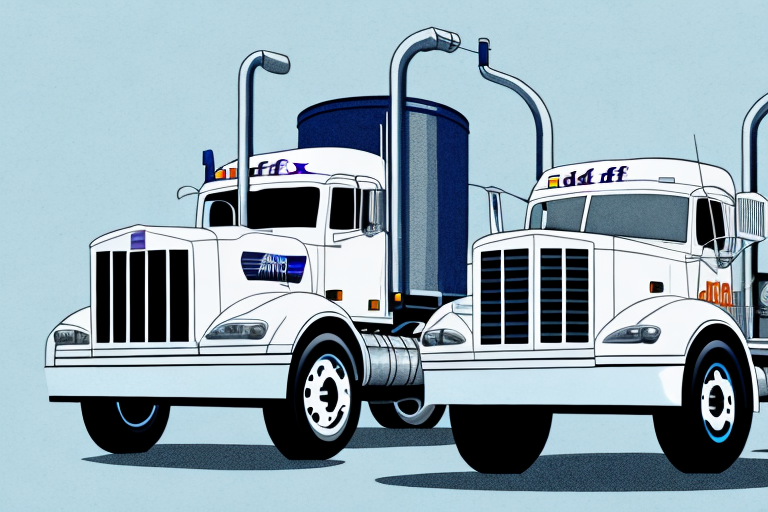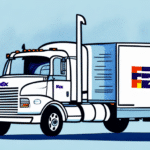How to Schedule Your Delivery for Maximum Efficiency
In today's fast-paced business environment, efficiency is paramount to success. For organizations reliant on deliveries, having a well-planned and optimized delivery schedule is essential. This article explores the importance of efficient delivery scheduling and provides actionable tips to optimize your delivery processes for maximum efficiency.
The Importance of Efficient Delivery Scheduling
Efficient delivery scheduling is crucial for businesses operating in the logistics industry. By optimizing delivery schedules, companies can:
- Reduce Transportation Costs: Effective scheduling minimizes fuel consumption and vehicle wear and tear.
- Improve Customer Satisfaction: Timely deliveries enhance customer trust and loyalty.
- Increase Profit Margins: Lower operational costs and higher customer retention contribute to better financial performance.
Additionally, optimized delivery schedules contribute to environmental sustainability by reducing the number of trips and lowering carbon emissions. According to a EPA report, optimizing delivery routes can significantly decrease a company's carbon footprint.
Understanding Your Delivery Needs
Assessing the Types of Goods
Different goods require varying handling and transportation methods. For example, perishable items need temperature-controlled environments, while fragile items require careful handling.
Determining Delivery Frequencies
Understanding how often deliveries occur helps in planning resources and scheduling routes effectively. High-frequency deliveries may benefit from dedicated routes, while lower frequencies might utilize flexible scheduling.
Choosing the Right Mode of Transportation
Selecting the most efficient mode—whether by truck, ship, or plane—depends on factors like distance, cost, and the nature of the goods being transported. Utilizing resources like ShipScience's logistics tools can aid in making informed transportation decisions.
Key Factors in Scheduling Deliveries
Distance and Route Planning
Minimizing travel distance not only reduces fuel costs but also shortens delivery times. Implementing route optimization software can help identify the most efficient paths.
Resource Availability
Ensuring that vehicles, drivers, and fuel are available when needed is essential. Proper resource management prevents delays and ensures smooth operations.
Traffic and Weather Conditions
Unpredictable factors like traffic congestion and adverse weather can disrupt delivery schedules. Utilizing real-time data from sources such as National Weather Service can help in adjusting plans proactively.
Customer Availability
Aligning delivery times with customer availability enhances the likelihood of successful deliveries and reduces the chances of missed attempts.
Optimizing Your Delivery Schedule
Batching Deliveries
Grouping deliveries by location or customer can significantly reduce transportation time and costs. This method ensures that drivers make efficient use of their routes.
Utilizing Technology
Implementing delivery management software can automate scheduling, track deliveries in real-time, and facilitate better communication with customers.
Prioritizing Deliveries
Identifying and prioritizing urgent or time-sensitive deliveries ensures that critical shipments are handled promptly, enhancing overall service reliability.
Regular Schedule Reviews
Consistently analyzing delivery performance helps in identifying bottlenecks and areas for improvement. Metrics such as delivery times, customer feedback, and cost efficiency should be regularly monitored.
Balancing Delivery Timeframes with Customer Expectations
Meeting customer delivery expectations is vital for maintaining satisfaction and loyalty. Effective strategies include:
- Clear Communication: Inform customers about expected delivery windows and any potential delays.
- Flexible Delivery Options: Offering same-day or next-day delivery can cater to diverse customer needs.
- Real-Time Tracking: Providing customers with tracking information enhances transparency and trust.
According to a study by Forbes, businesses that offer real-time tracking see a significant boost in customer satisfaction and repeat business.
Leveraging Technology in Delivery Management
Delivery Management Software
Software solutions can automate scheduling, optimize routes, and provide valuable analytics. Tools like ShipScience's Delivery Management Software streamline operations and enhance efficiency.
GPS Tracking
Real-time GPS tracking allows businesses and customers to monitor the location of delivery vehicles, ensuring timely updates and improved accountability.
Innovative Delivery Methods
Emerging technologies such as drones and autonomous vehicles are revolutionizing the delivery landscape, especially in areas with challenging access or high traffic congestion.
Smart Lockers
Installing smart lockers in strategic locations provides customers with convenient pick-up options, reducing missed deliveries and enhancing overall service flexibility.
Building a Reliable Delivery Network
Investing in Vehicle Maintenance
Regular maintenance of delivery vehicles prevents breakdowns and extends the lifespan of your fleet, ensuring consistent delivery performance.
Training and Supporting Drivers
Providing ongoing training helps drivers adhere to safety protocols and adopt best practices for efficient delivery, directly impacting service quality.
Establishing Strong Partnerships
Collaborating with reliable delivery partners ensures that your network remains robust and capable of handling varying delivery demands effectively.
Proactive Delivery Management
Predictive Analytics
Using data-driven insights to anticipate potential delivery issues allows businesses to implement preventive measures, reducing the likelihood of disruptions.
Contingency Planning
Having backup plans for scenarios like vehicle breakdowns or road closures ensures that deliveries can proceed with minimal delays.
Continuous Improvement
Regularly evaluating delivery performance metrics helps in refining strategies and maintaining high levels of efficiency and customer satisfaction.
Common Mistakes to Avoid When Scheduling Deliveries
- Ignoring Traffic and Weather: Failing to account for these factors can lead to unexpected delays.
- Assuming Uniform Customer Needs: Different customers may have unique delivery requirements that must be accommodated.
- Poor Communication: Not keeping customers informed can result in dissatisfaction and lost trust.
- Overloading Vehicles: Exceeding vehicle capacity can cause safety hazards and delivery delays.
Measuring and Evaluating Your Delivery Performance
To ensure the effectiveness of your delivery schedules, it's essential to regularly measure and evaluate performance using key metrics such as:
- Delivery Timeliness: Percentage of on-time deliveries.
- Transportation Costs: Total costs associated with delivery operations.
- Customer Satisfaction: Feedback and ratings from customers regarding delivery experiences.
Utilizing tools like ShipScience's Performance Tracking can help in systematically gathering and analyzing this data.
Future Trends in Delivery Scheduling and Management
The delivery landscape is rapidly evolving with advancements in technology and changing consumer expectations. Key trends include:
- Automation and Robotics: Increased use of automated systems and robotics to enhance delivery efficiency.
- Growth of E-commerce: The continual rise of online shopping demands more sophisticated delivery solutions.
- Artificial Intelligence: AI-driven analytics for better decision-making and route optimization.
- Blockchain Technology: Enhancing transparency and security in supply chain management.
Staying abreast of these trends is crucial for businesses aiming to maintain a competitive edge in the logistics industry.
Overall, effective delivery scheduling is a cornerstone of successful logistics operations. By thoroughly understanding your delivery needs, considering key factors, leveraging technology, and continuously optimizing your strategies, you can achieve maximum efficiency and superior customer satisfaction.




















